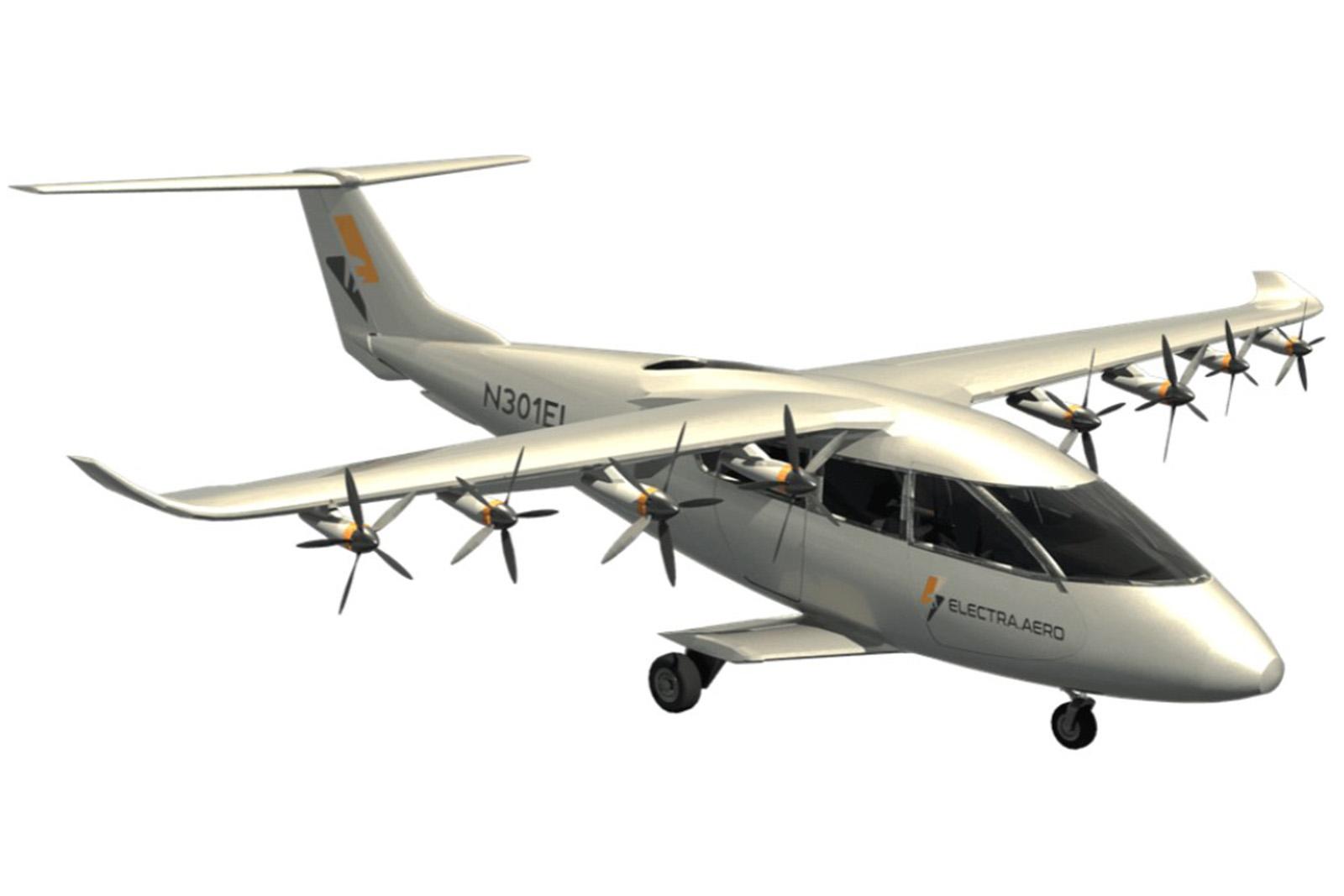
LAS VEGAS—U.S. startup Electra.aero confirms it is developing a near-conformal demonstrator version of its planned Ultra Short nine-passenger hybrid electric short-takeoff-and-landing (eSTOL) aircraft, the final configuration of which will be unveiled in mid-November.
“We've taken a significant strategic decision, because we've had such success on the two-seat prototype, to go direct to the product,” says Electra.aero CEO Marc Allen. Originally the Manassas, Virginia-based company planned to follow the prototype— the 3,100-lb. EL-2 Goldfinch—with an interim technology demonstrator before going to the final vehicle.
Updating progress on the eSTOL program at the NBAA-BACE convention here, he said: “We are going to now build what we call a G-0— a generation-0 airplane—which will not be fully conforming, but will be very close to it. G-0 will be shortly followed by G-1, which will be the conforming aircraft.” Electra.aero plans to build four G-1 vehicles for the flight-test and certification program.
“The design intent of G-0 is to go as close as absolutely possible to conforming,” adds JP Stewart, vice president and general manager at Electra.aero. “There are some risk areas that we would want to flight test on G-0 before we have a conforming airplane done, but a lot of it really is actually ground test development.”
Flight tests of the EL-2 meanwhile continue to probe the performance limits of the blown-wing design as part of a test campaign that has so far amassed 60 flight hours over 55 flights. “The shortest takeoff was around 150 ft., maybe a little bit shorter, and the shortest landing so far was about 114 ft.,” Allen said. He added that the maximum altitude reached to-date is 6,500 ft.
The aircraft has also flown as slow as 22 kt.-indicated air speed. “We still haven't found the stall speed yet,” Allen noted. Finding the aircraft’s stall speed and developing a stall warning system—likely a combination of indicated airspeed, angle of attack, power setting and the vehicle’s motion relative to the surface—will be important parts of Electra’s flight-test campaign and subsequent aircraft development effort.
Initial results from wind tunnel tests of the Ultra Short production version are “pretty far along at this point and have been exceeding expectations,” Stewart said. The production aircraft is designed to cruise at 175 kt. and carry up to 2,500 lb. of cargo or nine passengers and bags on regional intercity routes up to 500 mi. While acknowledging the speed is “not quite the same as some of the aircraft that will move you with turbine speeds,” Allen adds this will not be a time factor for transit times on routes of around 200 nm, which “we envision are going to be a big part of this aircraft’s performance.”
As the company pivots from development to production it is also evaluating a variety of options for assembly. “We are looking at a limited number of locations all in the United States—on the order of seven to eight, and we are looking at both greenfield operations and partner operations. That is one of the critical pieces of our work in 2025,” Allen said.





